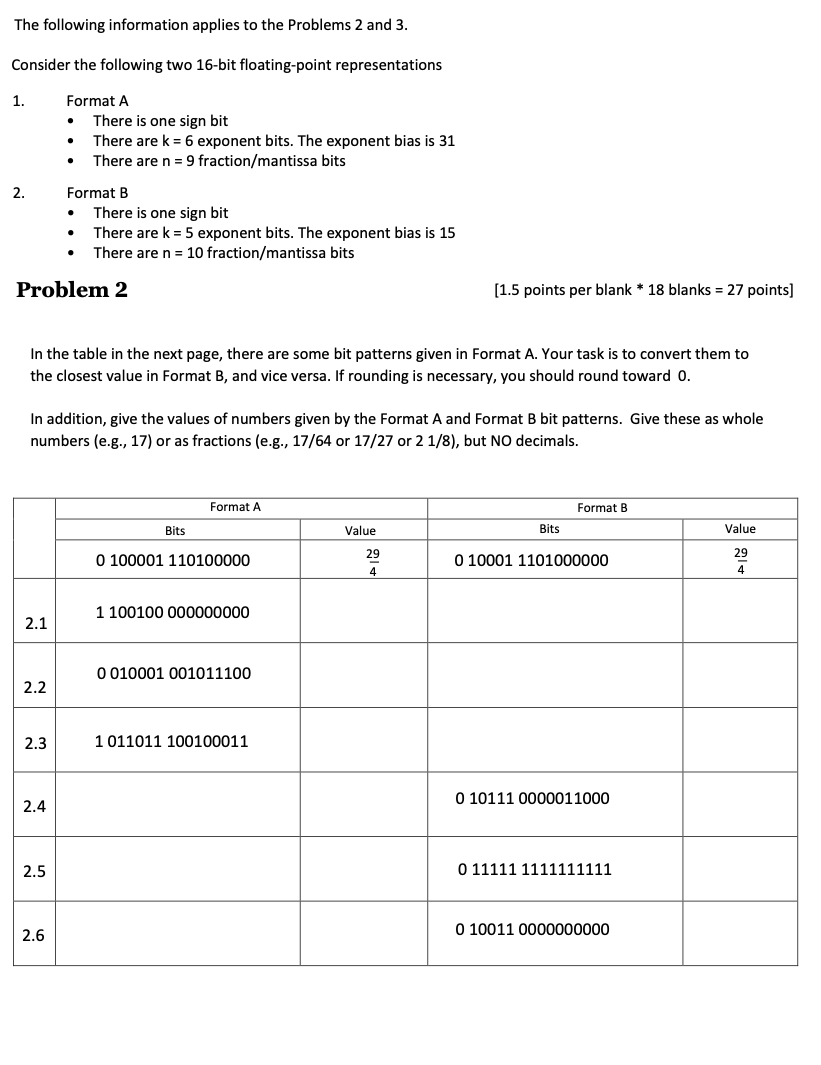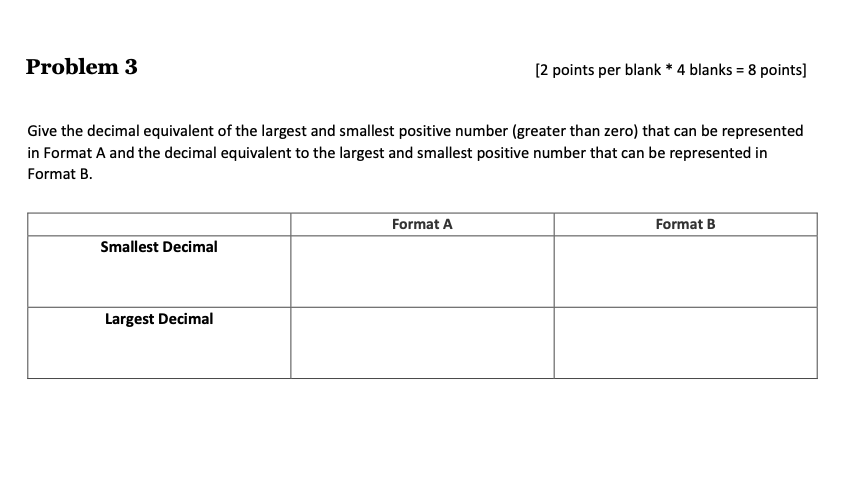Answered step by step
Verified Expert Solution
Question
1 Approved Answer
please show work in paper The following information applies to the Problems 2 and 3. Consider the following two 16-bit floating-point representations 1. Format A


please show work in paper
The following information applies to the Problems 2 and 3. Consider the following two 16-bit floating-point representations 1. Format A There is one sign bit There are k = 6 exponent bits. The exponent bias is 31 There are n = 9 fraction/mantissa bits . C 2. . Format B There is one sign bit There are k = 5 exponent bits. The exponent bias is 15 There are n = 10 fraction/mantissa bits Problem 2 [1.5 points per blank * 18 blanks = 27 points) In the table in the next page, there are some bit patterns given in Format A. Your task is to convert them to the closest value in Format B, and vice versa. If rounding is necessary, you should round toward O. In addition, give the values of numbers given by the Format A and Format B bit patterns. Give these as whole numbers (e.g., 17) or as fractions (e.g., 17/64 or 17/27 or 2 1/8), but NO decimals. Format A Format B Bits Value Bits Value 0 100001 110100000 29 4 0 10001 1101000000 4 1 100100 000000000 2.1 0 010001 001011100 2.2 2.3 1 011011 100100011 2.4 0 10111 0000011000 2.5 0 11111 1111111111 2.6 0 10011 0000000000 Problem 3 [2 points per blank * 4 blanks = 8 points] Give the decimal equivalent of the largest and smallest positive number (greater than zero) that can be represented in Format A and the decimal equivalent to the largest and smallest positive number that can be represented in Format B. Format A Format B Smallest Decimal Largest DecimalStep by Step Solution
There are 3 Steps involved in it
Step: 1

Get Instant Access to Expert-Tailored Solutions
See step-by-step solutions with expert insights and AI powered tools for academic success
Step: 2

Step: 3

Ace Your Homework with AI
Get the answers you need in no time with our AI-driven, step-by-step assistance
Get Started


